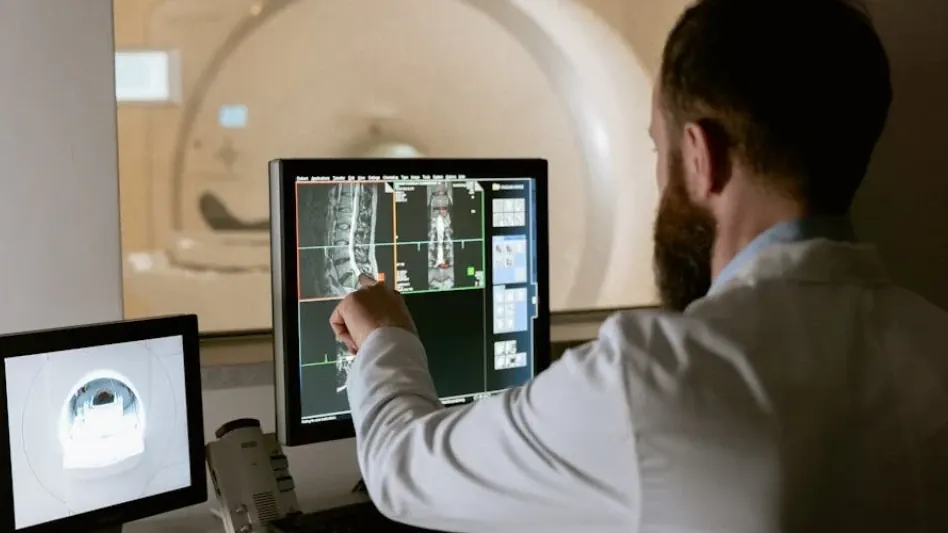The analogy between heart arrhythmias and the working patterns of radiologists offers a unique perspective into the various dynamics and challenges faced within a radiology department. By comparing the inconsistent work rhythms of certain radiologists to different types of arrhythmias, we gain insights into the ways these patterns can affect both productivity and the quality of output. Dr. Paul McCoubrie’s article delves into this metaphor to shed light on the need for balance and support within radiology teams to foster a healthy and efficient work environment.
The Tale of Wenckebach and Atrial Fibrillation
In an engaging anecdote, Dr. McCoubrie introduces two notorious radiologists from a small British hospital, humorously nicknamed “Wenckebach” and “Atrial Fibrillation.” These nicknames were chosen for a reason, as their erratic work patterns mimicked specific heart arrhythmias. “Wenckebach” was known for producing predictably inconsistent reports, much like the Mobitz type I arrhythmia, characterized by regularly irregular heartbeats. In contrast, “Atrial Fibrillation” generated completely unpredictable reports, paralleling the erratic nature of atrial fibrillation.
The work of “Atrial Fibrillation” ranged widely in quality, with some reports being highly accurate and detailed while others were entirely irrelevant or inaccurate. This inconsistency often left their colleagues and supervisors in a state of uncertainty regarding the reliability of their output. “Wenckebach,” on the other hand, relied heavily on pre-made templates for normal scans, ensuring that these reports maintained a reasonable level of accuracy. However, their free-text reports were frequently vague and unreliable, leading to fluctuating quality in their work.
Their eventual departure from the NHS due to non-radiology-related issues and subsequent success as teleradiologists, a role better suited to their erratic work rhythms, underscores a broader point. It illustrates that inconsistent performance within a radiology department can often be linked to underlying behavioral challenges, not just professional competency. This highlights the importance of understanding and addressing these underlying issues to improve overall productivity and report quality.
The Perils of Rapid Reporting: Ventricular Tachycardia
Dr. McCoubrie shifts the discussion to the broader implications of irregular work rhythms among radiologists, particularly focusing on the dangers of overly rapid reporting. He describes a case where a radiologist was hired to clear a significant backlog and worked at an astonishing pace of over 100 radiographs per hour. While this remarkable speed initially seemed impressive, the quality of their reports suffered greatly. One chest radiograph report was so poor that it simply stated, “The heart is clear,” a nonsensical and unhelpful observation that compromised patient care.
This scenario is likened to Ventricular Tachycardia, where rapid and uncontrolled activity leads to detrimental outcomes. The pressure to maintain such high speeds can result in significant errors, decreased work quality, and ultimately burnout. Overly rapid work rhythms place undue strain on radiologists, diminishing their job satisfaction and potentially jeopardizing patient care. It is essential for radiology departments to recognize these dangers and prioritize a balanced approach to work that emphasizes quality over quantity.
A sustainable work pace ensures that radiologists can produce high-quality reports without sacrificing their well-being. Encouraging a balanced workload, setting realistic expectations, and providing necessary support are crucial strategies for maintaining a healthy and productive radiology department. By fostering an environment that values thorough and deliberate work, departments can avoid the pitfalls associated with excessive speed and ensure better outcomes for both radiologists and patients.
The Slow and Steady: Bradycardic Radiologists
On the opposite end of the spectrum, the article discusses “Bradycardic radiologists,” who work at a significantly slower pace compared to their peers. In some cases, an experienced radiologist’s slow work may be highly valuable, particularly when dealing with complex cases such as whole-body MRI scans. However, slow work is often indicative of inexperience, distraction, illness, or burnout. These radiologists, compared to those with a Ventricular Escape Rhythm, typically require support rather than punishment to overcome their challenges and increase their efficiency.
In some instances, a Bradycardic pace can be a deliberate choice, reflecting a meticulous yet overly cautious approach to their work. This methodical work style may be inflexible and self-centered, potentially hampering not only their practice but also their colleagues. Such radiologists may exhibit hesitancy, laboriousness, and resistance to change, traits that can hinder the efficiency of the radiology department as a whole. Recognizing these traits and providing targeted support and resources can help these radiologists strike a better balance, enhancing both their productivity and the quality of their outputs.
By offering opportunities for professional development, mentorship, and fostering an environment that encourages open communication, radiology departments can assist these slower-paced radiologists in improving their work efficiency without sacrificing quality. A supportive infrastructure that caters to different work styles is key to maintaining a harmonious and productive workplace.
The Persistent Sinus Tachycardia
A more common issue discussed by Dr. McCoubrie is the persistent Sinus Tachycardia, where radiologists work at a consistently fast pace over an extended period. This pattern, while seemingly productive in the short term, can lead to burnout and a decline in work quality. High output levels are beneficial only when managed correctly and balanced with bursts of intense work and adequate rest periods. For radiologists, the ideal state is a steady and sustainable work rate akin to a healthy Sinus Rhythm. Such a balance ensures high-quality output without compromising their health or job satisfaction.
Radiology departments must strive to create an environment that promotes a sustainable work pace. This includes providing adequate breaks, ensuring manageable workloads, and fostering a culture that prioritizes employee well-being. By recognizing the signs of burnout early and addressing any emerging issues, departments can maintain a high level of performance while safeguarding the health of their radiologists.
Encouraging a balanced approach to work also involves promoting a healthy work-life balance and providing support systems that allow radiologists to manage their time and responsibilities effectively. When radiologists are well-supported and their workloads are balanced, they can deliver high-quality reports consistently, benefiting both the department and the patients they serve.
Embracing a Balanced Work Rhythm
The analogy between heart arrhythmias and radiologists’ work patterns provides a distinctive viewpoint on the dynamics and challenges within a radiology department. By likening the irregular work rhythms of certain radiologists to different types of arrhythmias, we can understand how these patterns impact productivity and the quality of work. Dr. Paul McCoubrie’s article explores this metaphor in detail, emphasizing the importance of balance and support within radiology teams to ensure a healthy and efficient work environment. Just as arrhythmias can disrupt the heart’s function, inconsistent work patterns can lead to disruptions within a radiology department, affecting both workflow and outcomes. Addressing these issues involves recognizing the significance of both individual and team rhythms. By fostering a supportive environment, radiology departments can enhance their overall efficiency and maintain high standards of quality. Through this metaphor, Dr. McCoubrie underscores the need for a collaborative and balanced approach to work in ensuring optimal results.









